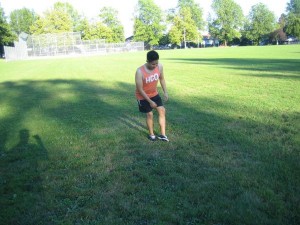Every now and then, one of the skeletal muscles in the body can cramp. It is important to note that this cramping is the involuntary contraction of the muscle fibers that do not relax. The muscles that are more likely to cramp are those that stretch over two joints such as the hamstring situated on the rear part of the thigh.
Individuals who are susceptible to suffer from a hamstring cramp usually include those who are dehydrated, overweight, older than 45 years old and engaging in strenuous physical activity. The hamstring cramps usually vanish without any form of treatment but some treatments can help relieve the tight muscle and relieve the pain.
Measures in managing a hamstring cramp

- Instruct the individual to stop any activity that triggered the hamstring cramp. You can relieve stress on the affected leg and allow it to rest. Additionally, the leg must be elevated while the individual is resting. If you want to learn how to properly care for this condition, read here.
- The hamstring must be stretched by extending the leg and placing it on an object higher than the waist level. Instruct the individual to bend at the waist to lean forward and stretch the muscle in the back of the thigh. An additional way to stretch the hamstring is lying on the back and put the hands on the back of the affected thigh while pulling the leg straight up at a 90-degree angle on the floor. The stretch must be held until the hamstring cramp stops.
- The affected hamstring must be massaged by rubbing it to help it relax.
- Apply an ice pack on the affected hamstring for about 15 minutes at least 4 times in a day after the cramp.
- You have to alternate heat therapy with ice therapy. Various ways to apply heat on the injured hamstring includes a heating pad or taking a hot bath.
- Provide the individual with non-steroidal anti-inflammatory drugs (NSAIDs) such as acetaminophen or ibuprofen in order to relieve the pain and inflammation of the hamstring cramp.
- Encourage the individual to drink plenty of fluids to stay hydrated as well as reduce the severity as well as the frequency of the hamstring cramps.
It is best to consult a doctor if the painful hamstring cramps does not seem to resolve with the home treatments. Medical conditions, injuries and medications can also cause muscle cramping. The cramping can be a sign of a serious underlying problem. If the individual is suffering from lasting or baffling cramping, it is best to consult a doctor right away.
The same methods that can be used to fight cramps can also be used to prevent them. The individual should follow a 10-minute warm up and stretch thoroughly for at least 10 minutes before exercise. The individual should drink plenty of fluids during and after exercise. Additionally, you have to use heat and massage to recover from hard workouts.
